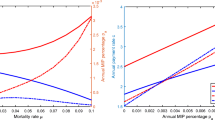Abstract
This paper discusses the policy debate leading up to the passage of legislation to reform the Federal Housing Administration's home mortgage insurance program in 1990. An actuarial study conducted by an independent accounting firm concluded that the insurance fund's net worth had steadily declined during the 1980s, and was less than the minimum needed to protect the taxpayer. Policy discussion necessarily addressed the trade-off between the financial soundness of the fund and its public purpose of promoting homeownership for middle- and moderate-income families. The legislation that was enacted—the most substantive change in the program in many years—included raising the net worth of the fund by increasing the mortgage insurance premium, adopting a sliding scale for premiums related to the original LTV of the mortgage, and reducing claims from foreclosures by requiring homebuyers to put up more cash at the time of closing (in the form of closing costs, which can be financed in FHA mortgages, rather than a higher down payment).
Similar content being viewed by others
Author information
Authors and Affiliations
Rights and permissions
About this article
Cite this article
Weicher, J.C. FHA reform: Balancing public purpose and financial soundness. J Real Estate Finan Econ 5, 133–150 (1992). https://doi.org/10.1007/BF00221526
Issue Date:
DOI: https://doi.org/10.1007/BF00221526




